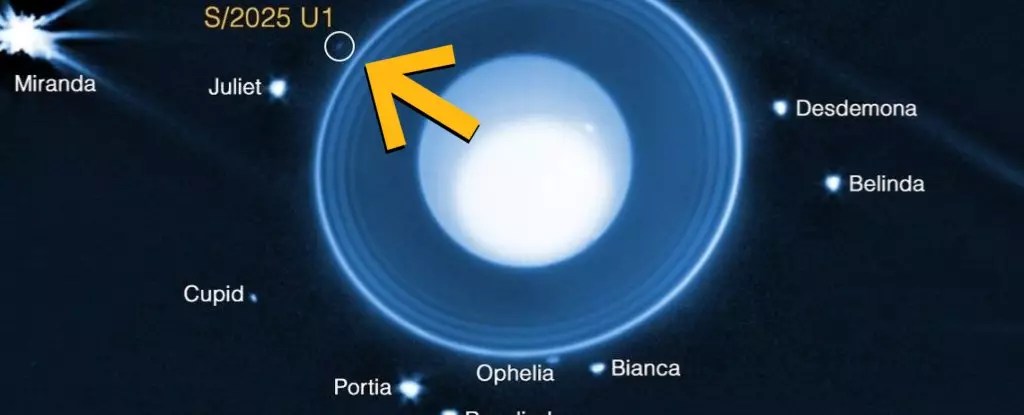When humanity first glimpsed Uranus through telescopes and spacecraft, there was a creeping sense of achievement—proof of our curiosity and ingenuity. Yet, just when we think we have peeled back all its layers, new discoveries shatter that illusion. The recent identification of an additional moon, designated S/2025 U1, exemplifies how much remains obscured in the shadowy depths of the Uranian system. It’s a humbling revelation: even after decades of technological advancement, our understanding of the icy giant and its entourage still feels fragmentary, incomplete, almost speculative. This persistent ignorance isn’t merely scientific curiosity; it’s a stark reminder that our knowledge is fragile and constantly overstated.
Micro-Moons and the Eccentricities of the Uranian System
What makes S/2025 U1 particularly startling is its diminutive size—roughly 10 kilometers across—and its faint presence, which eluded detection for decades, even from the detailed data collected by Voyager 2. The discovery by the James Webb Space Telescope, utilizing cutting-edge near-infrared imaging, highlights how advanced instrumentation has unveiled features previously thought undetectable. But what does this tell us about the Uranian system? It reveals a chaotic, almost chaotic, internal architecture. Unlike the more familiar planets with clearer, larger moons, Uranus is a chaotic mosaic of tiny moons intertwined with tenuous rings. Their complex gravitational interplay hints at a turbulent history, possibly marked by collisions, capture scenarios, or even disintegration events that continue to shape this icy realm. Our perception of planetary systems as stable and neat is grossly simplistic; Uranus is proving to be far messier and more dynamic.
The Myth of Scientific Finality and the Need for Reassessment
The discovery of such a faint and tiny moon should serve as a wake-up call. It shatters the myth that planetary systems are static, predictable, or fully mapped. The fact that even with the advanced capabilities of JWST, we might still be overlooking countless smaller moons and subtle features makes the entire enterprise of planetary science seem provisional at best. It compels us to rethink our assumptions about the “limits” of exploration. As Robert Frost might suggest, “The only way out is through,” yet in planetary science, that ‘through’ remains a daunting horizon, continuously receding with each technological leap. The urgent question is not just about what is discovered, but also about how much we have yet to uncover. As long as there are tiny, faint moons lurking in the shadows of Uranus, our understanding remains painfully superficial, leaving us with more questions than answers about the true nature of this distant world.
Why We Should Care: The Broader Implications
More than a curiosity, this ongoing revelation underscores a fundamental truth: our grasp of the universe is inherently limited. Each discovery compels us to consider what we’ve missed, what illusions of completeness we’ve constructed. In a world increasingly saturated with information, humility is scarce but urgently needed—especially when interpreting cosmic phenomena. As we invest in future missions and telescopes, the focus should shift from just collecting more data to critically reassessing our conceptual frameworks. Uranus, with its chaotic moons and enigmatic rings, is not just a distant planet; it is a mirror reflecting our collective scientific hubris. Recognizing our ignorance opens the door to a more cautious and inquisitive approach—one that values depth over false certainty and is willing to accept that the universe’s secrets are far from exhausted. That’s the true challenge: confronting our limited perspective and acknowledging that, in the grand cosmic puzzle, we’ve only just begun to scratch the surface.

